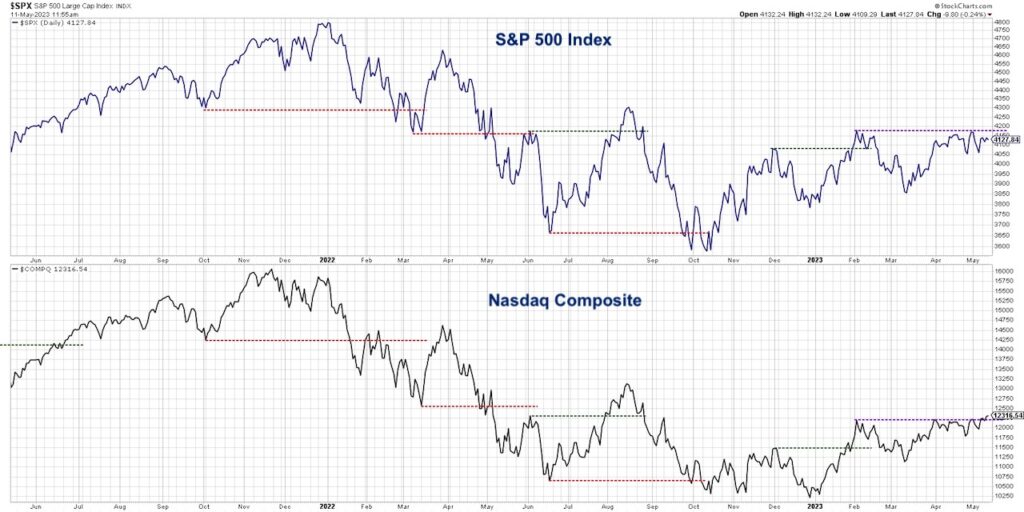The New Dow Theory is a modern take on Charles Dow’s original method of analyzing the Dow Industrials and Dow Railroads.
The general concept was to compare the performance of the Industrials (the producers of goods) and the Railroads (the distributors of goods) to determine whether these two main pillars of the US economy were in good shape.
The New Dow Theory uses the S&P 500, representing the “old economy” stocks, and the Nasdaq Composite as a gauge of the “new economy” sectors like technology and communication services.
While the S&P 500 is struggling to overcome its February high around 4200, the Nasdaq Composite pushed above its own February high this week. What does this tell us about the underlying conditions for the equity markets?
In today’s video, we’ll review the potential bullish confirmation from the S&P 500 and Nasdaq Composite, and what a bearish non-confirmation could mean for the broader equity markets.
- What are the challenges to using the Dow Industrials and Dow Transports as a measure of economic strength in 2023?
- How have the equity markets performed after bullish and bearish confirmations over the last two years?
What would a bearish non-confirmation suggest about prospects for the S&P 500 index as we continue through the seasonally weakest part of the calendar year?
VIDEO: New Dow Theory – S&P 500 versus Nasdaq Analysis
S&P 500 versus Nasdaq Composite Price Comparison Chart

Twitter: @DKellerCMT
The author may have positions in mentioned securities at the time of publication. Any opinions expressed herein are solely those of the author, and do not in any way represent the views or opinions of any other person or entity.








